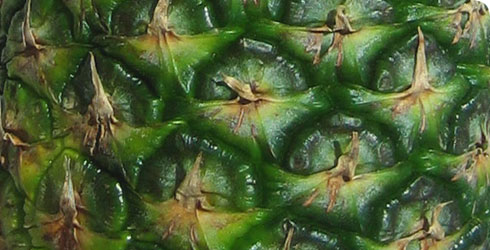Taxonomy
The Paraná-Paraguay river drainage basin is thought to be the region where the pineapple originated. It was also the home of the Tupi-Guaraní Indian tribe.
In the scientific binomial Ananas comosus has the following etymology:
- Ananas comes from the Tupi word nanas, meaning ‘excellent fruit’, as recorded by André Thevet in 1555
- comosus means tufted, and refers to the stem of the fruit
The pineapple is a perennial monocotyledonous plant with terminal inflorescence and fruit.
The hermaphrodite flowers are trimerous, they have:
- 3 sepals
- 3 petals
- 6 stamens
- 1 tricarpellary pistil with an inferior ovary
The placenta and ovules are located in 3 deep cavities called locules.
Flowers are normally self sterile and fruit development is parthenocarpic (meaning fruit is produced without fertilisation of ovules, leading to sterile, seedless fruit).
The fruit consists of up to 200 berry-like fruitlets which are fused together on a central axis that is the continuation of the fibrous peduncle.
Most of the floral tissue and the tissue of the central cylinder turns fleshy and becomes edible. As soon as this process is complete, it is no longer possible to distinguish between different types of tissue. The outside surface of each individual fruitlet forms the ‘eyes’ of the pineapple.
